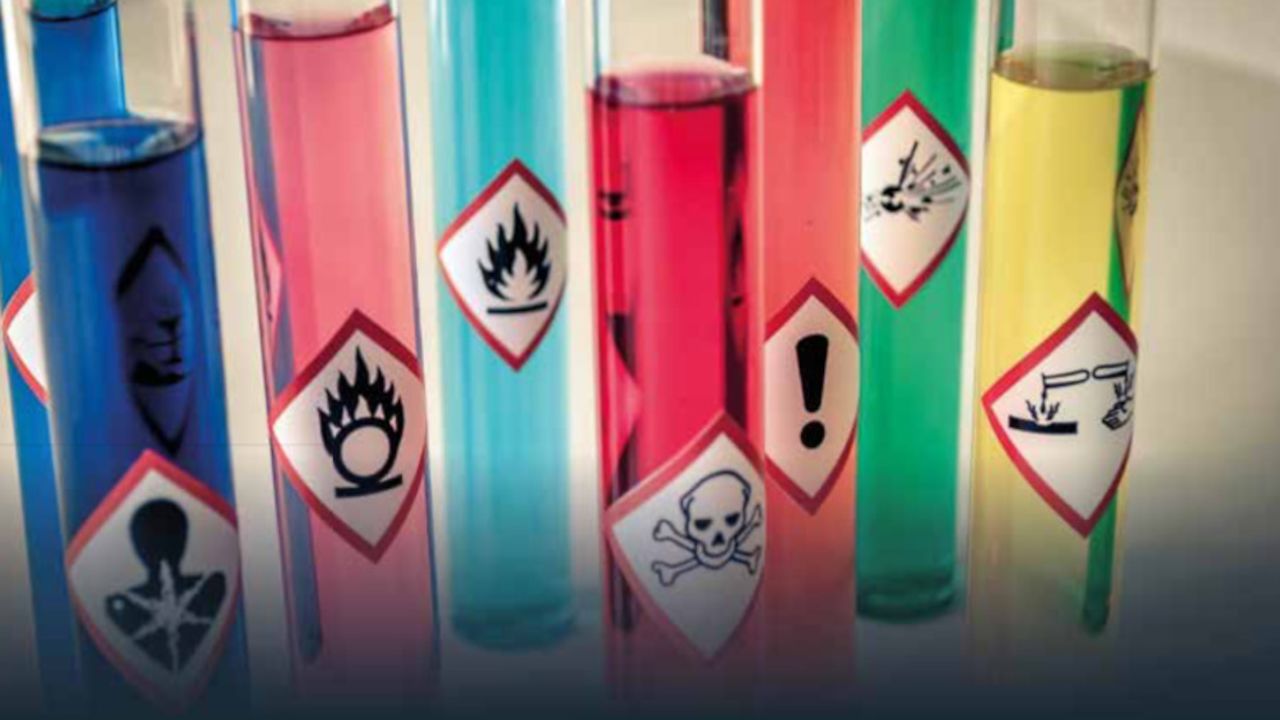Chemicals can be a great risk in professional life. The measures taken for the use, storage, and supply of such chemicals eliminate both risks and possible health hazards. Turkish Aerospace Occupational Safety Engineers Gül Özkılıç, Merve Aydın, and Tuğçe Munzur inform us about chemicals.
Chemicals can be defined as compounds and mixtures that can be found in nature, produced during a process, or produced as waste.
Encountered in all areas of both daily and professional life, these substances can make life easier when used properly but can lead to health and facility integrity risks when used unchecked.
Most of the chemicals used at work are hazardous chemicals which have one or more dangerous qualities such as being explosive, oxidizing, highly/moderately/mildly flammable, highly/moderately toxic, unhealthy, abrasive, irritant, allergic, cancerogenic, mutagenic, toxic for reproduction, and environmentally dangerous.
Companies need to take measures to ensure employee well-being and facility integrity in the supply, transportation, storage, use, and elimination processes of chemicals. To this end, the fundamental safety elements of chemical use have been guaranteed by Occupational Health and Safety Law No. 6331 and the Regulation on Health and Safety Measures in Working with Chemicals.
Get to know the chemicals before using them
It’s important to know which chemicals are being used and their effects in order to determine how dangerous they are and the appropriate level of exposure for employees. For this, companies should take advantage of safety data sheets which are prepared exclusively for each chemical by the producing company and which the supplier is obliged to provide. Companies should avoid using chemicals that are not stored in their original packaging or have missing tags and safety data sheets. The safety data sheets (SDS) need to be in Turkish.
Companies should ask the following questions while evaluating the risk of chemicals:
• Which kinds of chemicals are employees exposed to?
Raw materials, chemicals that are produced or spread during processes, and end products should be evaluated with regards to everyone that can be exposed including production line workers, maintenance and repair employees, cleaning personnel, and visitors.
• What kind of hazards can these substances cause?
The hazardous effects of these substances can be learned from their tags, safety data sheets, and chemical/facility/equipment suppliers in addition to other means of information and experts in that industry. If they carry a risk of fire or explosion, it should be noted in order to ensure facility integrity.
• What deserves attention when handling chemicals?
It should be noted when and how chemicals spill or spread in addition to situations in which they can be inhaled, swallowed, or absorbed through the skin.
• Which risks should be checked?
When there’s an exposure to chemicals, it should be evaluated whether it poses a threat to the health of those involved. This depends on duration and frequency of exposure, and the concentration of active substances. Companies should pay attention to which accidents or malfunctions can lead to serious health problems. It’s important to check risks of fire and explosion.
Transportation and storage are critically important
The transportation and storage of chemicals bear great significance for protecting facility integrity and preventing accidents caused by spilling or spreading of chemicals. Chemicals which have the tendency to react with each other should always be transported separately and stored in conditions specified by the accompanying guidelines.
Storage areas, especially those reserved for flammable and combustible chemicals, should be explosion proof with proper grounding against static electricity and inaccessible to unauthorized personnel. These chemicals should also be transported with equipment that cannot create sparks.
Companies should pay attention to risk analysis results and risk prevention principles in line with the regulations. In order to protect employees from the dangers of the physical and chemical features of such substances, companies should take the necessary technical measures and make corporate reorganizations in the processing, storage, and transportation of chemicals in addition to preventing chemicals from reacting with each other.

